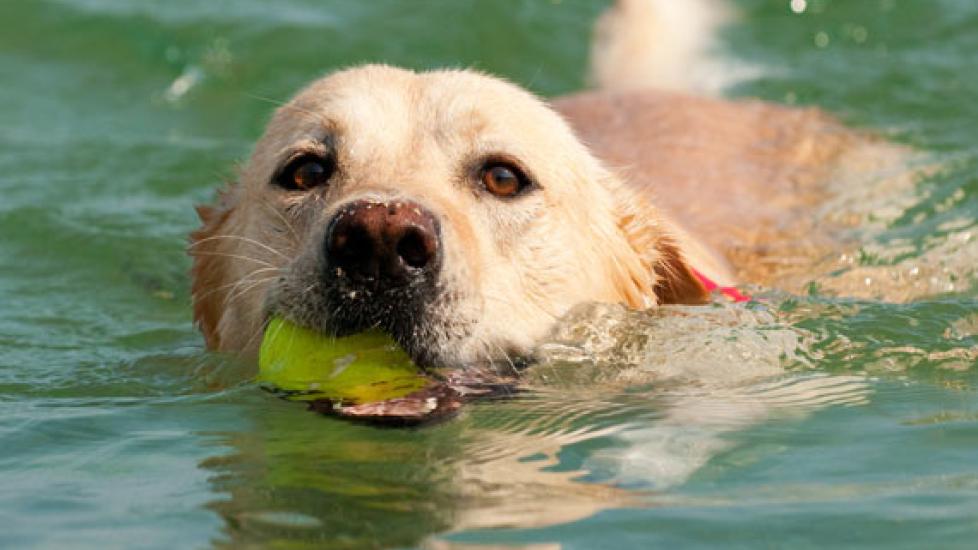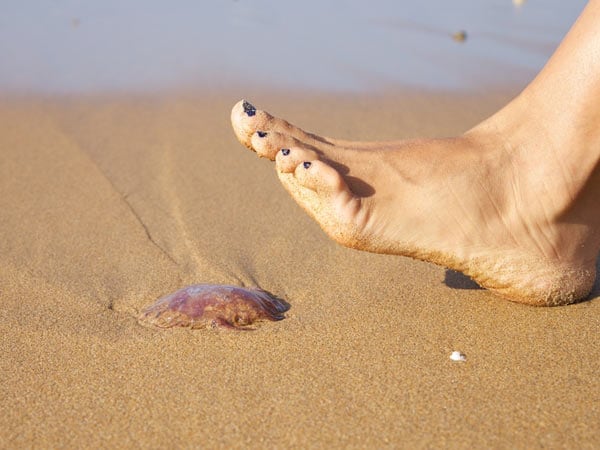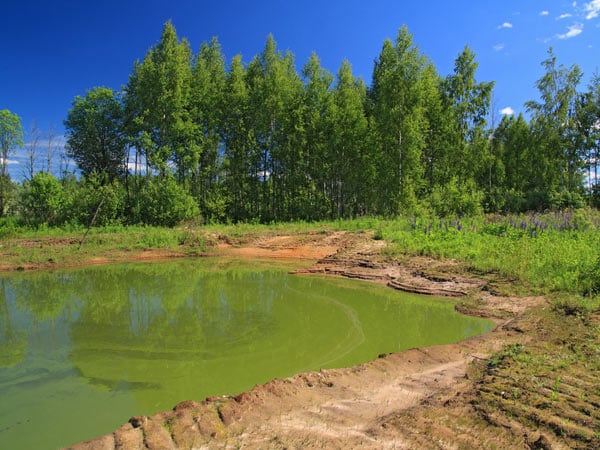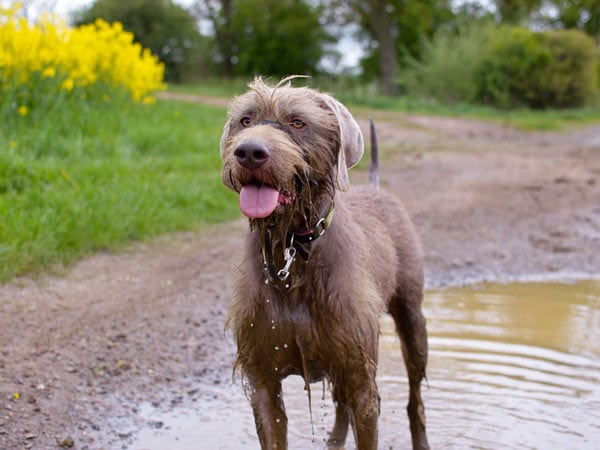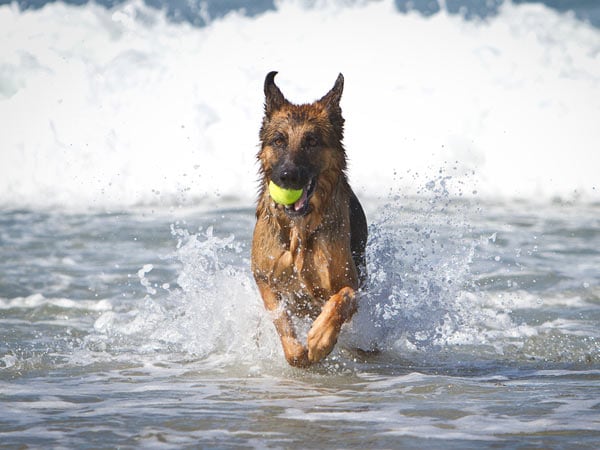Dangers in Water Are Often Invisible
We can’t live without water. But our waters can often be dangerous to us and our pets.
A Florida television channel reported last week about the deaths of two men who had contracted a rare flesh destroying bacteria found in salt water. Six others were reported to have been stricken with the same bacteria. Whether the condition was contracted directly from the water, or from oysters or fish from those waters, is still not clear.
There have been no reports of dogs being stricken by the same bacterial infection. The incident, however, got me to thinking about the many ways that water can harbor danger to our pets. This post will explore a few.
Jellyfish
Jellyfish washed onto the shore are a very common finding for beach combers and their beach combing dogs. The tentacles of these creatures have organs that release a stinging toxin whose potency varies with the different species of jelly fish. Even dried out tentacles in the sand or mixed in seaweed can still release the toxin.
Dogs that come in contact with the tentacles or bite them can have a mild to serious local allergic reaction, or a more serious anaphylactic reaction resulting in shock. That is exactly what happened to 2-year-old pit bull named Diamond after she bit the tentacles of the most toxic of jellyfish, the Portuguese Man O’ War. After several days in intensive care, including transfusions, Diamond survived and is back to her old self. Many dogs are not that fortunate. If your dog has been stung by jellyfish tentacles, even one of the less toxic species, remove the tentacles without touching them directly with your bare hands and immediately seek veterinary care.
Blue-Green Algae
Warm weather can promote massive growth of blue-green algae in standing bodies of fresh or brackish (the slightly salty waters of lagoons, estuaries, and ponds near the ocean) waters. The musty or foul smell of the algae is often attractive to dogs. It can cause skin rashes for dogs swimming in the algae infested water. Dogs should be thoroughly washed as soon as possible. For dogs that drink algae contamintaed water, toxins in the algae can affect the kidneys, liver, intestines, and nervous system. Initial symptoms are vomiting, diarrhea, weakness, and difficulty walking. Immediate veterinary care is also advised in these cases.
Parasites and Bacteria
Martin Christopher Parker / Shutterstock
Standing areas of fresh water like small lakes, ponds, and even puddles can host various parasites and bacteria. Giardia and Cryptosporidium are the most common parasites. These parasites cause gastrointestinal distress resulting in vomiting and diarrhea. Most dogs recover quickly from the infection, but puppies and older dogs with compromised immune systems can be severely affected and need medications and diet modification in order to recover.
Leptospirosis can also be found in small bodies of water that have been contaminated by rodents and other small animal that urinate in the water. Although not as common as water-borne parasites, the bacteria is much more dangerous to dogs that drink the contaminated water. Leptospirosis causes kidney damage that can lead to kidney and liver failure. Infected dogs may be lethargic and vomit. With early diagnosis and treatment, dogs do not suffer long-term kidney or liver problems. Vaccines are available to prevent the disease but they are somewhat controversial due to their tendency to cause allergic reactions and because of the vaccination frequency needed to effectively prevent the disease.
Salt Water Poisoning
Dogs love to frolic in the ocean, but salt water is toxic to humans and dogs if they drink too much. Ocean soaked tennis balls or other absorbent fetch toys contain enough salt to cause problems for the dogs that are fetching them. Mild ingestion of salt water can cause “beach diarrhea.” The excess salt (or hypernatremia) in the intestines draws water from the blood into the intestines, causing the diarrhea. The diarrhea can sometimes contain blood and mucous. If your dog drinks large amounts of salt water, hypernatremia can lead to vomiting, dehydration, incoordination, seizures, and require veterinary care.
Avoid salt poisoning by taking a break every 15 minutes away from the water to offer fresh water to the dog. If your dog won’t drink willingly, use a bottle with a sports cap and squirt fresh water into the mouth.
Water activity is great for dogs and the exercise far outweighs the risks, but it is important to be mindful of the risks in the water you dog so dearly loves.

Dr .Ken Tudor
Read Part 2 of Dogs and Water Borne Diseases
Image: Stanimir G.Stoev / Shutterstock
Related Content
The Challenges of Diagnosing Giardia in Cats and Dogs
Video: The Rise of Leptospirosis and Combating this Bacterial Disease
